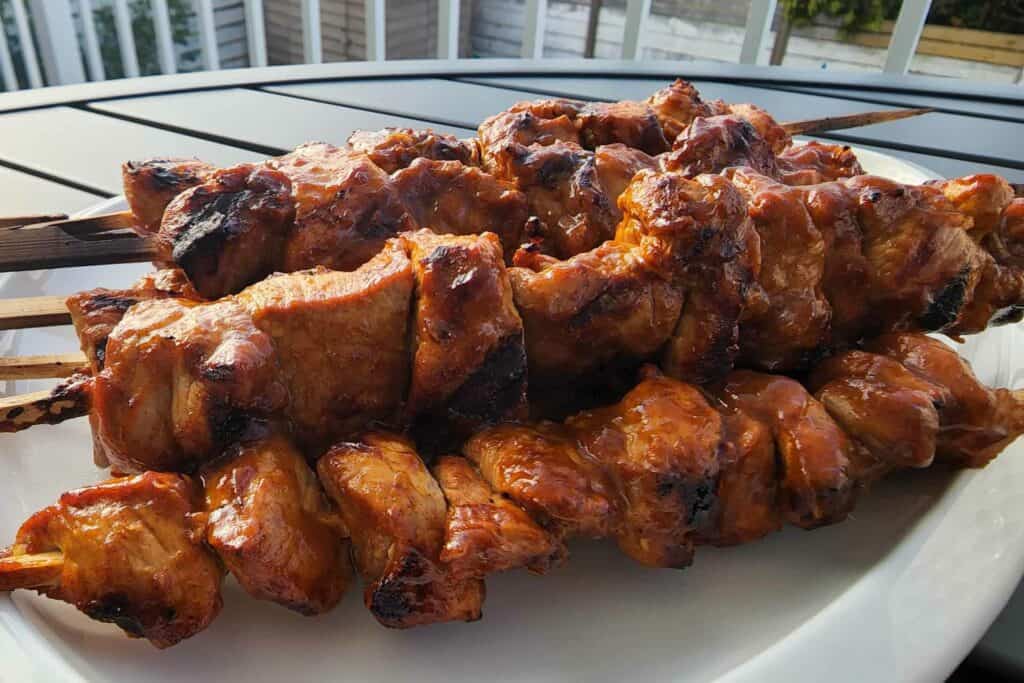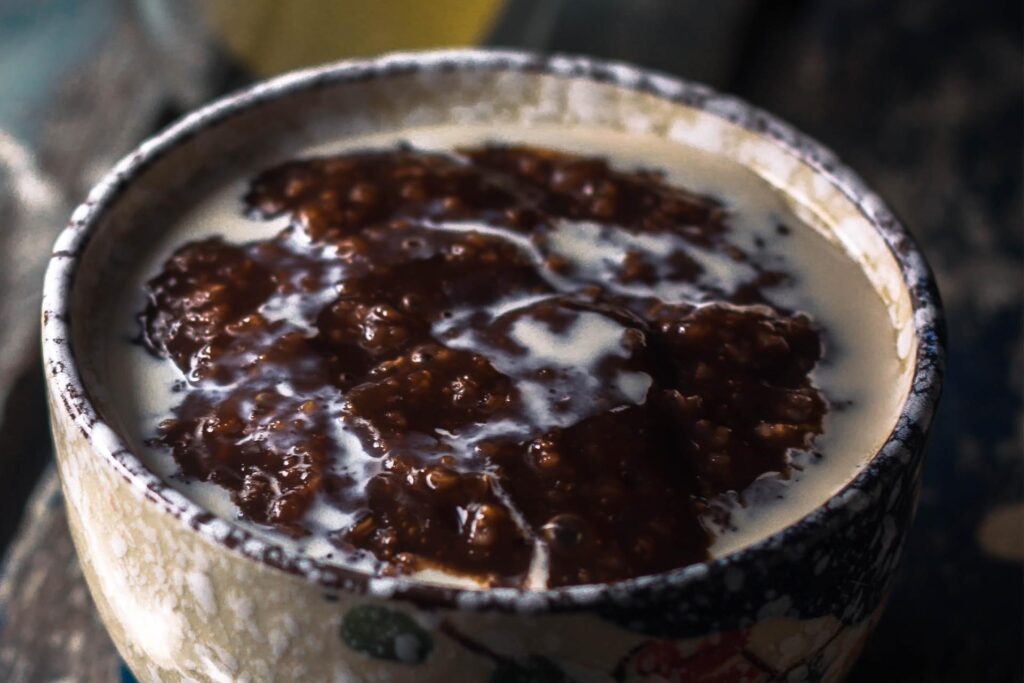Rotisserie chicken has become a popular choice for a quick and delicious meal, whether enjoyed on its own or incorporated into various recipes. But what happens when you have leftover rotisserie chicken? Can you freeze it for later use? In this comprehensive blog post, we will explore the ins and outs of freezing rotisserie chicken, including the factors to consider, best practices, potential changes in taste and texture, benefits and uses of frozen rotisserie chicken, safety guidelines, frequently asked questions, and more.
Understanding the Composition of Rotisserie Chicken
Before diving into the process of freezing rotisserie chicken, it’s important to understand its composition. Rotisserie chicken is typically cooked using a slow, rotating method that ensures even cooking and a flavorful result. It is often seasoned with a variety of herbs and spices, which contribute to its delicious taste. The chicken is cooked until it reaches a safe internal temperature and is then ready to be enjoyed.
Factors to Consider Before Freezing Rotisserie Chicken
When it comes to freezing rotisserie chicken, there are a few factors to keep in mind to ensure optimal results. The first consideration is the time since the chicken was purchased or prepared. It’s generally recommended to freeze rotisserie chicken within a few days of purchase or after it has been cooked. The fresher the chicken, the better the quality will be after freezing.
Another important factor to consider is the packaging and storage conditions. Proper packaging is crucial to prevent freezer burn and maintain the quality of the chicken. It’s recommended to transfer the chicken into airtight containers or freezer bags, removing as much air as possible. Labeling the containers with the date of freezing can help you keep track of the chicken’s freshness.
Lastly, the quality and freshness of the rotisserie chicken itself are important considerations. If the chicken is already showing signs of spoilage or if it has been sitting out at room temperature for an extended period, it’s best to discard it rather than freezing it. Freezing will not revive or improve the quality of chicken that is already past its prime.
Best Practices for Freezing Rotisserie Chicken
To ensure the best results when freezing rotisserie chicken, there are a few best practices to follow. First, it’s important to properly cool the chicken before freezing. Leaving the chicken at room temperature for too long can lead to bacterial growth. Once the chicken has been cooked, allow it to cool for a short period at room temperature, then transfer it to the refrigerator to cool completely before freezing.
When it comes to packaging, choose materials that are suitable for freezing. Airtight containers or freezer bags are ideal for preventing freezer burn and maintaining the quality of the chicken. Make sure to remove as much air as possible from the packaging to minimize the risk of freezer burn.
In terms of storage duration and temperature, it’s generally recommended to consume frozen rotisserie chicken within three to four months for best quality. However, it can remain safe to eat for a longer period if properly stored at 0°F (-18°C) or below. It’s important to note that the longer the chicken is frozen, the more the quality may deteriorate in terms of taste and texture.
Potential Changes in Taste, Texture, and Quality After Freezing
Freezing rotisserie chicken may lead to some changes in taste, texture, and overall quality. The flavor of the chicken may be slightly altered after freezing, particularly in terms of seasoning. The herbs and spices used in the cooking process may not retain their original intensity, resulting in a milder taste. However, this can easily be adjusted by adding additional seasonings or sauces when reheating or incorporating the chicken into recipes.
Texture alterations can also occur after freezing rotisserie chicken. The freezing and thawing process can cause the chicken to become slightly drier or lose some of its juiciness. To minimize this, it’s recommended to freeze the chicken as soon as possible after cooking and to properly thaw and reheat it.
When it comes to maintaining the overall quality of frozen rotisserie chicken, proper thawing and reheating techniques are essential. Thawing the chicken in the refrigerator overnight or using the defrost function on your microwave are the safest methods to prevent bacterial growth. Reheating the chicken thoroughly to an internal temperature of 165°F (74°C) will ensure any bacteria are eliminated, while also helping to restore some of the moisture and juiciness.
In conclusion, you can freeze rotisserie chicken for later use, but it’s important to consider factors such as time since purchase or preparation, packaging and storage conditions, as well as the quality and freshness of the chicken. By following best practices for freezing and properly thawing and reheating, you can enjoy the convenience of frozen rotisserie chicken without compromising its taste and quality.
Benefits and Uses of Frozen Rotisserie Chicken
Freezing rotisserie chicken opens up a world of possibilities when it comes to meal planning and preparation. Not only does it provide convenience, but it also offers a range of benefits and versatile uses. Let’s explore some of the advantages of freezing rotisserie chicken and the various ways you can incorporate it into your culinary endeavors.
Convenience and Time-Saving Advantages
One of the primary benefits of freezing rotisserie chicken is the convenience it offers. By having frozen cooked chicken on hand, you can easily whip up a quick and delicious meal without the need for extensive preparation or cooking time. Whether you’re short on time or simply looking for a hassle-free option, frozen rotisserie chicken can be a lifesaver.
Having frozen rotisserie chicken also provides ready-to-eat meal options. You can defrost a portion of chicken and enjoy it as it is, paired with your favorite sides or as a protein-packed salad topping. It eliminates the need for cooking from scratch, making it an ideal choice for busy weekdays or when you’re simply looking for a quick and satisfying meal.
Cost-Effectiveness and Budget-Friendly Meals
Another advantage of freezing rotisserie chicken is its cost-effectiveness. When you purchase a whole rotisserie chicken, freezing the leftovers allows you to maximize its use and stretch your budget. Instead of wasting any remaining chicken, freezing it ensures that you can make the most of every part.
By freezing rotisserie chicken, you can create multiple meals from a single purchase. For example, you can use the chicken in various recipes such as sandwiches, wraps, casseroles, or pasta dishes. This not only saves you money but also adds versatility to your meal options.
Versatility in Recipes and Culinary Applications
Frozen rotisserie chicken can be a versatile ingredient in a wide range of recipes and culinary applications. Its tender and flavorful meat can be incorporated into numerous dishes, adding depth and richness. Here are a few creative ways to utilize frozen rotisserie chicken:
- Soups and Stews: Add chunks of frozen rotisserie chicken to hearty soups and stews for an instant protein boost. Whether it’s a classic chicken noodle soup or a comforting chicken and vegetable stew, the frozen chicken will thaw and cook in the simmering liquid, infusing the dish with its delicious flavor.
- Pizza or Salad Topping: Shred or chop the frozen rotisserie chicken and use it as a topping for homemade pizzas or salads. The pre-cooked chicken saves you time and effort, while adding a burst of flavor to your creations. Simply thaw the chicken and sprinkle it over your favorite pizza crust or salad greens for a satisfying and nutritious meal.
- Other Creative Uses: Get creative with your recipes by incorporating frozen rotisserie chicken in various ways. Make flavorful chicken quesadillas, enchiladas, or even chicken fried rice. The possibilities are endless, and the frozen chicken serves as a convenient and tasty base for your culinary experiments.
With its versatility and ability to enhance a wide range of dishes, frozen rotisserie chicken is a valuable ingredient to have in your freezer. It allows you to save time, money, and effort while still enjoying delicious and satisfying meals.
Safety Guidelines and Precautions
When it comes to handling and storing food, including frozen rotisserie chicken, it’s crucial to prioritize safety to prevent any potential health risks. Following proper guidelines and precautions will ensure that your frozen rotisserie chicken remains safe to consume. Let’s explore the key safety measures to keep in mind.
Understanding Food Safety Principles
Before delving into the specifics of freezing rotisserie chicken, it’s essential to have a basic understanding of food safety principles. Proper handling and storage practices are vital to prevent foodborne illnesses and maintain the quality of the food. Here are a few key principles to keep in mind:
- Cleanliness: Always start with clean hands, utensils, and work surfaces when handling food. Wash your hands thoroughly with soap and warm water before and after handling raw or cooked chicken.
- Separation: Avoid cross-contamination by keeping raw chicken separate from other foods, especially those that will not be cooked before consumption. Use separate cutting boards, utensils, and plates for raw chicken to prevent the spread of bacteria.
- Cooking Temperatures: Cook chicken to a safe internal temperature of 165°F (74°C) to kill any harmful bacteria that may be present. Use a food thermometer to ensure accurate measurement.
- Refrigeration and Freezing: Refrigerate or freeze perishable foods promptly to prevent bacterial growth. Follow recommended storage temperatures and durations to maintain food quality and safety.
Thawing Frozen Rotisserie Chicken Safely
When it comes to thawing frozen rotisserie chicken, it’s important to follow safe thawing methods to minimize the risk of bacterial growth. Avoid thawing chicken at room temperature, as this can allow bacteria to multiply rapidly. Here are two recommended methods for safely thawing frozen rotisserie chicken:
- Refrigerator Thawing: The safest method for thawing frozen chicken is to transfer it from the freezer to the refrigerator. Place the frozen chicken in a leak-proof container or on a plate to catch any drips, and allow it to thaw slowly in the refrigerator overnight or for several hours. This gradual thawing process keeps the chicken at a safe temperature while minimizing bacterial growth.
- Microwave Thawing: If you need to thaw the chicken quickly, you can use the defrost function on your microwave. Follow the manufacturer’s instructions for defrosting chicken and make sure to cook it immediately after thawing to prevent bacterial growth.
It’s important to note that thawed chicken should not be refrozen unless it has been cooked. Once the chicken has been thawed, it should be consumed or cooked within a short period to ensure food safety.
Reheating Frozen Rotisserie Chicken Properly
When reheating frozen rotisserie chicken, it’s crucial to heat it thoroughly to eliminate any bacteria that may have developed during the freezing and thawing process. Here are a few methods for reheating frozen rotisserie chicken safely:
- Oven: Preheat your oven to 350°F (175°C). Place the frozen chicken on a baking sheet or in an oven-safe dish and heat it for approximately 20-25 minutes or until it reaches an internal temperature of 165°F (74°C).
- Stovetop: If you prefer a stovetop method, you can heat the frozen chicken in a skillet or frying pan over medium heat. Cook the chicken, turning occasionally, until it reaches an internal temperature of 165°F (74°C).
- Microwave: If you’re looking for a quick option, you can use your microwave to reheat frozen rotisserie chicken. Place the chicken on a microwave-safe plate and heat it in short intervals, stirring or flipping the chicken occasionally, until it is heated throughout and reaches an internal temperature of 165°F (74°C).
Remember to discard any leftover reheated chicken that has not been consumed within two hours to prevent foodborne illnesses.
By following these safety guidelines and precautions, you can ensure that your frozen rotisserie chicken remains safe to consume while minimizing the risk of foodborne illnesses. Proper thawing and reheating techniques are essential to maintain both the safety and quality of the chicken.
Final Thoughts
Freezing rotisserie chicken offers numerous benefits, including convenience, time-saving advantages, cost-effectiveness, and versatile uses. Whether you’re looking for a quick ready-to-eat meal, a protein source for various recipes, or a budget-friendly option to stretch your food budget, frozen rotisserie chicken can be a valuable addition to your freezer.
To make the most of your frozen rotisserie chicken, it’s important to follow safety guidelines and precautions. Practice proper food safety principles, such as cleanliness, separation of raw and cooked foods, and appropriate cooking temperatures. Thaw frozen chicken safely in the refrigerator or using the defrost function on your microwave, and ensure thorough reheating to eliminate any bacteria present.
While frozen rotisserie chicken can be stored for an extended period, it’s recommended to consume it within three to four months for best quality. Beyond this timeframe, the taste and texture may start to deteriorate. Labeling the packaging with the date of freezing can help you keep track of its storage duration and ensure you prioritize consuming it within a reasonable timeframe.





